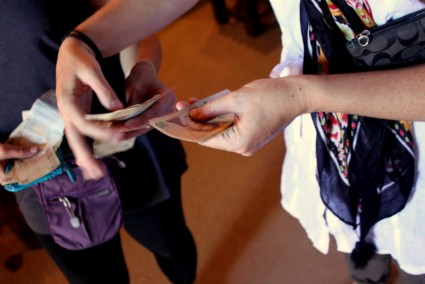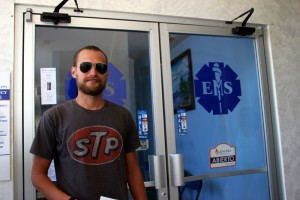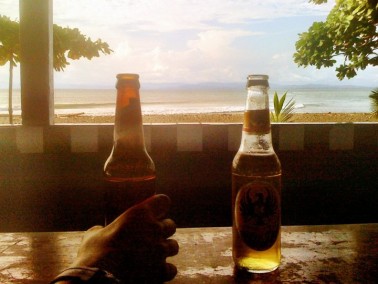Editors Note: this is part 3 of a ten part series we are doing on overlanding advice. Future PanAm overlanders this is for you. They post each Sunday.
Determining a long term budget for a trip like the PanAm is certainly the crux. Before this, our PanAm trip was still a wavering fantasy. Staring at the carefully crafted numbers was our moment of clarity, when we realized how attainable it truly was. These are our numbers to help you on your path to financial enlightenment.
Set-up costs
Probably the most variable of the cost categories, this is your truck and equipment. Right now we’re parked in Northern Argentina next to a quarter of a million dollar Mercedes expedition camper. Their tires cost more than our camper. On the other end of the spectrum, we wanted to hit the road soon so we sought out the cheapest option without sacrificing reliability. Additionally, we wanted a vehicle equipped to be lived in with 4WD.
No matter your price scale, nobody seems to come in under budget here. These were our costs:
- 2003 Toyota Tundra: $10,200
- Taxes and registration: $984
- New tires, tune-up & maintenance: $3,013 for details click here and here
- 2007 Palomino camper: $5,200
- Modifications: $1,773 including Firestone Ride-Rites, HD Bilsten shocks, Garmin GPS, new camper house battery, spring-loaded turnbuckles, tie-downs, etc.
- Camp and recovery equipment: $1,758 including things like an axe, tools, camp grill, air compressor, Maglite, etc.
- Total Set-up: $22,929
Variable costs
These are the must-haves like health insurance, expected vehicle maintenance, visa fees, vehicle shipping, airfare, etc. These are the easiest to budget as they are either a one time fixed-cost (airfare home) or based on the number of months you’ll be on the road (health insurance). There always are surprises however. Our shipping costs from Panama to Colombia sure were a “surprise.” It would be prudent to include the unexpected here to cover cost over-runs and also unexpected vehicle maintenance such as an engine rebuild or window replacement.
Below are our costs for 12 months. We will update with final numbers once we’re done and settled.
- Health insurance: $1,200 for 12 months of coverage with World Nomads
- Car insurance: $1,899 for 3rd party only insurance issued by Sanborns
- Property/renters insurance: $169 covered theft of belongings
- Container shipping to Colombia: $1,973 to share a 40 foot high cube container. This figure includes everything from the boat to the translator to the taxi costs. You’ll find this number higher than most others who shipped this year.
- Flights to Colombia: $667 – We regretted not sailing the San Blas islands to Colombia which is cheaper when you account for food and lodging.
- Mountain guide in Peru: $800 one week for guide, cook, and food. Best $800 I’ve ever spent.
- Vehicle and camper repairs: $523 including Firestone Ride-Rite replacement parts and small miscellaneous mechanical work I outsourced. Does not include maintenance such as oil and filter replacements.
- Buenos to US shipping: $1,000 (Expected)
- Flights home: $2,000 (Expected)
- Oh shit fund: $876 – The unexpected: Bolivian visa fee, voltage converter, etc.
- Total Variable Costs: $ 11,107
Day-to-day expenses
This is the big one; what most people want to know. Among the couples we’ve met, the range has been anywhere from $30 to $100 per day. This includes gas, all lodging (campsite fees), food, booze, tours and entertainment. We aimed aggressively at $60, but our average expenditures per day have been $72. Our figure includes everything not specified in the categories above.
To give you a sense of the life you get at $72/day: For lunch and dinner we eat out 25-30% of the time, breakfast always in the camper. We shop at supermarkets 75% of the time and municipal markets (cheaper) 25% of the time. If we’re in town on the weekends we’ve been known to spent a couple hours in the local cantina. We bush camp 15% of the time, stay in organized campsites 80% of the time, and only 5% in hotels or hostels.
Damn, we live well. We drink much too much Havana Club and have too many nights on the town to consider ourselves serious budgeters. Those that spend close to the $30 range, move at a sloth’s pace, rarely pay to camp, and eat out twice a month. If you plan to do the PanAm (excluding Alaska and Canada) in 8-9 months, start thinking about a trip extension now as your gas costs alone would be more than $30 per day at that pace.
Your pace of travel has a lot to do with day-to-day expenses. It’s important to know that our $72 figure was at a 15 month pace (San Francisco to Ushuaia). We found ourselves moving fast through Mexico on to Costa Rica where we slowed it down. Aside from gas costs, moving fast means buying more convenience and treating yourself to luxuries after 8 hours of stressful Latin America driving. If you plan to do the PanAm in 6 months or less, you’re doing something different and this number doesn’t apply what-so-ever.
Living slowly, on or off the road, has a way of making life more affordable.
Speaking of gas, this black stuff is 20 – 25% of our day-to-day expenses. The ebb and flow (mostly flow) of gas prices can drastically effect your budgeting. We watched global gas prices double from when we started our savings and research (2009) to the time we hit the road in 2011.
$100 a day looks a lot like our life on the road with a few more splurges in the form of organized tours, hotel stays, and steak dinners.
Isn‘t that great? Your average fly-in vacationer with their organized tour groups and plane ticket expenses can only dream of getting out of the homeland for under $200 per day.
Other Overlanders’ Budgets
Life of Saturdays / 95 Degrees South
























































Great write up. Just a note some USA vehicle insurance cannot be purchased for foreign registered vehicles, like a Canadian registered vehicle. Also many travel medical insurances either do not offer services to those over 60yrs or are ridiculously expensive. Safe travels
Janet and Tom
Ah, to be young and from the US
Remind us what kind of mpg you average so far?
On a good paved road we’re getting 18mpg which is better than in the US because of the speed limits down here. But on the roads we’ve traveled it’s averaged out to about 14-16mpg. More info on gas and prices by country in an upcoming Sunday post!
Thanks for putting together the great info. Always nice to get a new perspective.
Thanks for putting together the great info. Always nice to get a new perspective.
Pingback: Costs by Country | PanAm Notes
Pingback: Overland 4x4, Budget, Preparation - Costs by Country -
When you guys say you averaged $72 a day, do you mean as a couple?
You are correct. $72/day for the two of us.
after all this how safe would you say, im planning on dong this same trip, im at the dream stage now